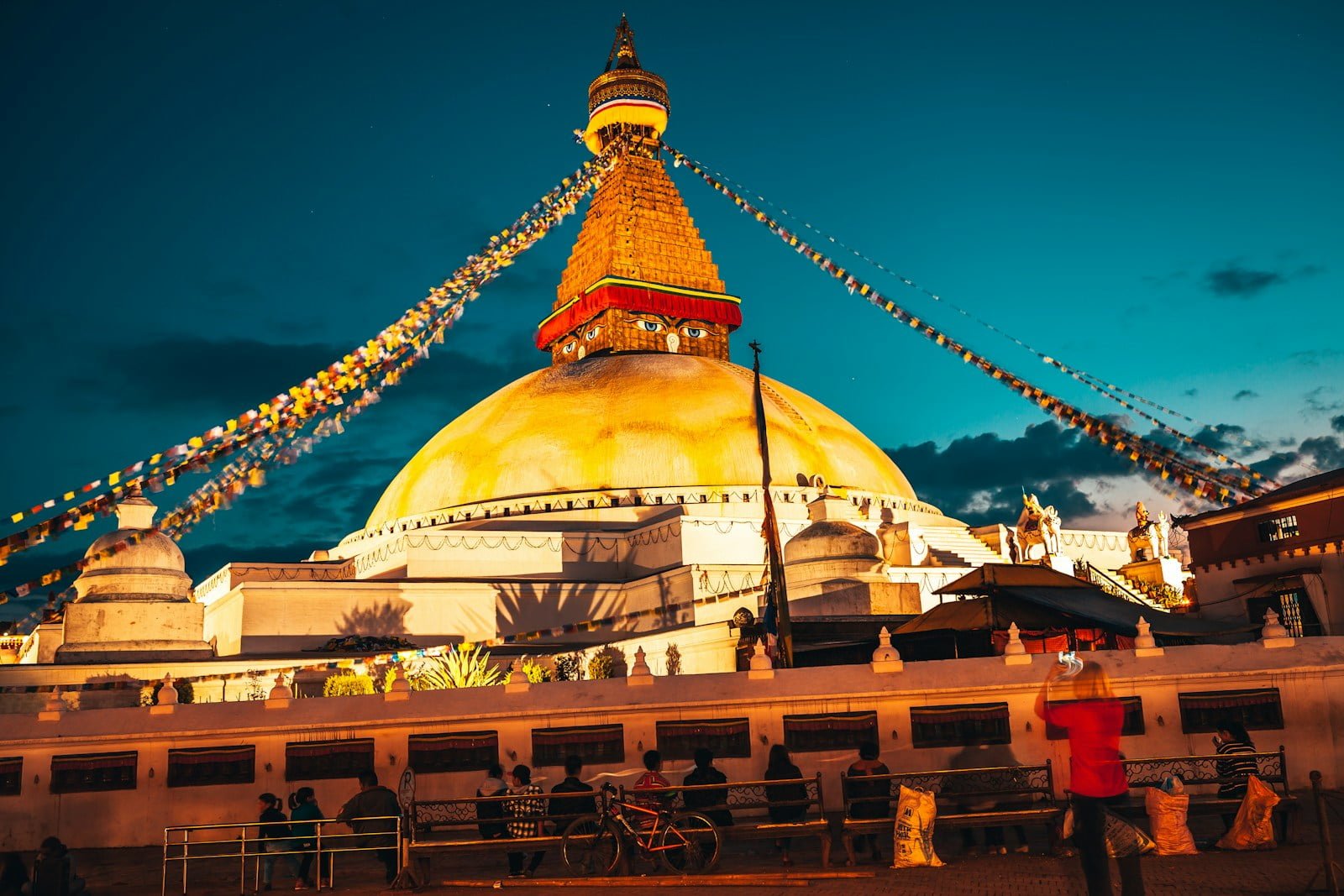Top Cultural Sites in Kathmandu
Kathmandu, the capital of Nepal, is a city steeped in history and culture. It is home to numerous remarkable cultural sites that attract tourists from all around the world. Despite the devastating earthquake in 2015, many of these sites remain intact, and their significance in preserving Nepal’s rich cultural heritage cannot be overstated. Here are some of the top cultural sites in Kathmandu that should be on every traveler’s itinerary
Kathmandu Durbar Square: A Testament to Nepal’s Rich History and Culture
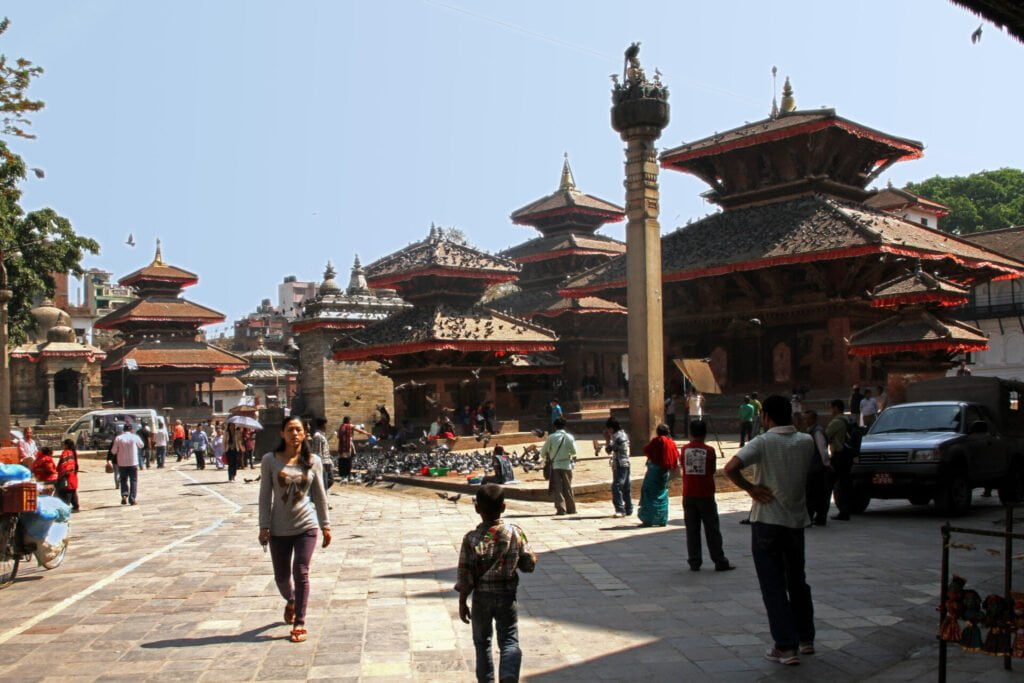
Kathmandu Durbar Square holds a special place in the hearts of Nepalese people as it represents the rich history and culture of the country. Located in the heart of Kathmandu, this historic palace has witnessed the rise and fall of numerous kings and rulers who once sat and ruled over Nepal. The square is one of the three durbar squares in the country, along with Patan and Bhaktapur.
Despite facing the unfortunate devastation caused by the 2015 earthquake, Kathmandu Durbar Square has managed to retain its original glory. The square is home to numerous ancient structures and temples that date back to the 17th and 18th century. Although some buildings collapsed during the earthquake, the site still remains a remarkable legacy of Kathmandu’s traditional architecture.
A visit to Kathmandu Durbar Square offers a glimpse into the grandeur of Nepal’s past. Stepping into the square, visitors are transported back in time as they explore the intricate architecture, beautiful temples, and museums that were once the royal vicinities. The entire premise is adorned with stunning craftsmanship, reflecting the skills and artistry of the people of that era.
One of the highlights of Kathmandu Durbar Square is the Hanuman Dhoka Palace, which served as the residence of the Malla kings and later passed on to the Shahs. The palace holds great historical significance and was used for important rituals and ceremonies, including the coronation of kings. Today, it stands as a symbol of the royal legacy of Nepal.
Walking through the square, visitors can also admire the Bhaktapur royal palaces and other ancient structures that have stood the test of time. Each temple and building tells a story, representing the religious and cultural heritage of Nepal. Despite the devastation caused by the earthquake, the atmosphere in Kathmandu Durbar Square remains quintessentially Kathmandu, with old men sitting and chatting in the shadows and children chasing pigeons.
A visit to Kathmandu Durbar Square is an opportunity to immerse oneself in the history and culture of Nepal. Exploring this UNESCO World Heritage site allows visitors to appreciate the architectural beauty of the past and gain a deeper understanding of Nepal’s rich heritage. Whether it’s admiring the intricate wood carvings or marveling at the grandeur of the temples, Kathmandu Durbar Square offers a truly immersive experience.
For the best atmosphere, it is recommended to visit Kathmandu Durbar Square in the early morning or at dusk. The tranquil ambiance during these times adds to the allure of the place, allowing visitors to soak in the history and spirituality that permeates the square.
Patan Durbar Square
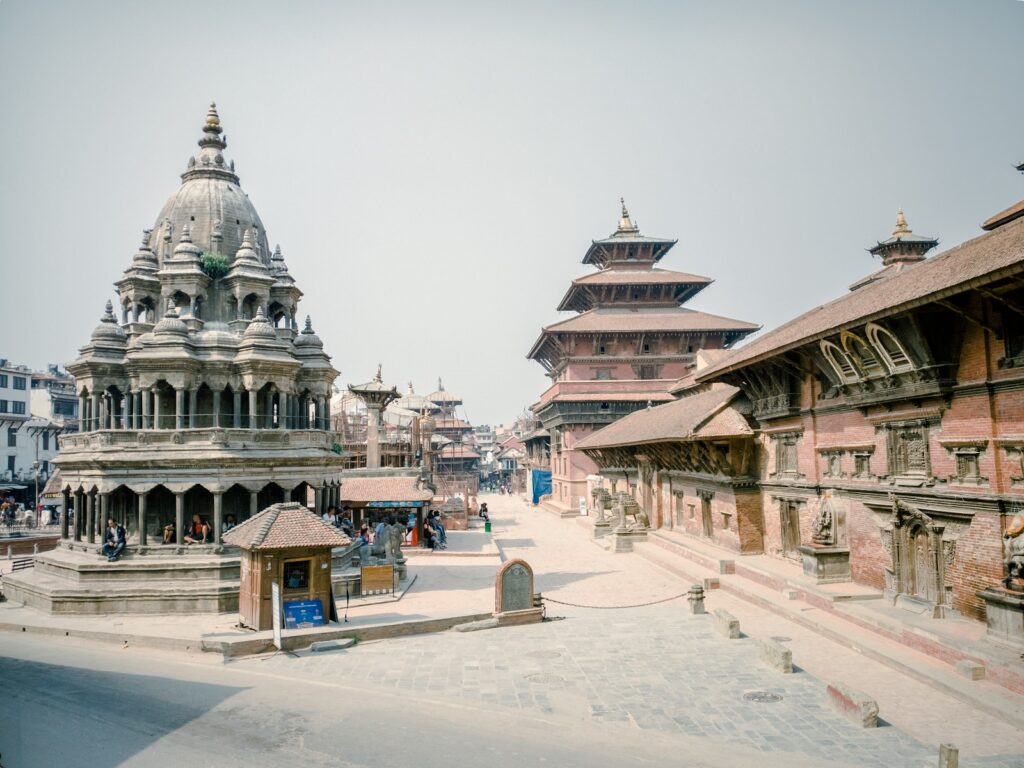
Historical Background of Patan Durbar Square
Patan Durbar Square, located in the Lalitpur district of Nepal, holds a rich historical background that dates back centuries. Originally founded by the Kirat dynasty in the 3rd century, the town of Patan underwent significant transformation and development during the Lichhavi period. It was during this time that the town was taken over and remodeled into perfection, showcasing the exquisite craftsmanship and architectural brilliance that still stands today.
The Malla kings later ruled Patan and contributed to the city’s cultural and artistic heritage. As a result, Patan Durbar Square became known as the epitome of Newari craftsmanship, reflecting the fusion of Hindu and Buddhist cultures. The square is considered a cultural hub, attracting both Hindus and Buddhists who come to admire its temples, palaces, and courtyards.
Architectural Features
One of the most significant structures in Patan Durbar Square is the Krishna Mandir, a temple built in 1667 by Siddhi Narsing Malla. This temple is adorned with 21 gold pinnacles, known as Gajur, and showcases the local variety of Shikhara style called Granthakuta. The temple stands as a testament to the architectural prowess of the Malla dynasty and continues to be a revered site for devotees and tourists alike.
Apart from the Krishna Mandir, Patan Durbar Square is also home to numerous other temples, palaces, and courtyards, each displaying unique architectural features and intricate carvings. The square is surrounded by four stupas built by Emperor Ashoka during the 3rd century BC, adding to its historical significance.
Today, Patan Durbar Square is recognized as a UNESCO World Heritage Site, preserving its historical and cultural heritage for future generations. The square serves as a reminder of Nepal’s rich history, art, architecture, and culture, allowing visitors to immerse themselves in the timeless beauty of this ancient city.
Visiting Patan Durbar Square provides a glimpse into Nepal’s glorious past and offers a unique opportunity to appreciate the craftsmanship and architectural brilliance of the Malla dynasty. As one explores the square, they can witness the fusion of Hindu and Buddhist influences, creating a truly mesmerizing experience.
Traditional and Cultural Events Held at Patan Durbar Square
Patan Durbar Square, located in the heart of the ancient city of Lalitpur in Nepal, is not only a remarkable architectural heritage site but also a cultural hub that hosts various traditional and cultural events throughout the year. This square, listed as a UNESCO World Heritage site, is a testament to the rich cultural traditions of both Hindus and Buddhists in Nepal.
One of the major events held at Patan Durbar Square is the Rato Machindranath Jatra, also known as the chariot festival. This religious festival is dedicated to the deity Rato Machindranath and is celebrated with great fervor by the local community. The highlight of the festival is the procession of a massive wooden chariot, carrying the idol of Rato Machindranath, through the streets of Patan. This event attracts thousands of devotees and tourists who come to witness the grandeur and religious significance of the festival.
Another significant event held at Patan Durbar Square is the Bhoto Jatra, also known as the “vest festival.” This festival takes place during the month of May or June and is a unique cultural event that showcases the ancient traditions of Nepal. During the festival, the “Bhoto,” a sacred vest believed to belong to the Rain God, is displayed to the public. A large number of people gather at the square to witness the unveiling of the Bhoto and to participate in the festivities that accompany the event.
Apart from these major events, Patan Durbar Square is also a venue for various other cultural and religious ceremonies. The square is often used for traditional Newari weddings, where the rich cultural heritage and traditions of the Newar community are showcased. These weddings are elaborate affairs, with colorful processions, music, dance, and traditional rituals taking place within the premises of the square.
Furthermore, Patan Durbar Square is a hub for traditional music and dance performances. Local artists and musicians often gather at the square to entertain visitors with their mesmerizing performances. The square provides a perfect backdrop to showcase the vibrant and diverse cultural heritage of Nepal.
Pashupatinath Temple
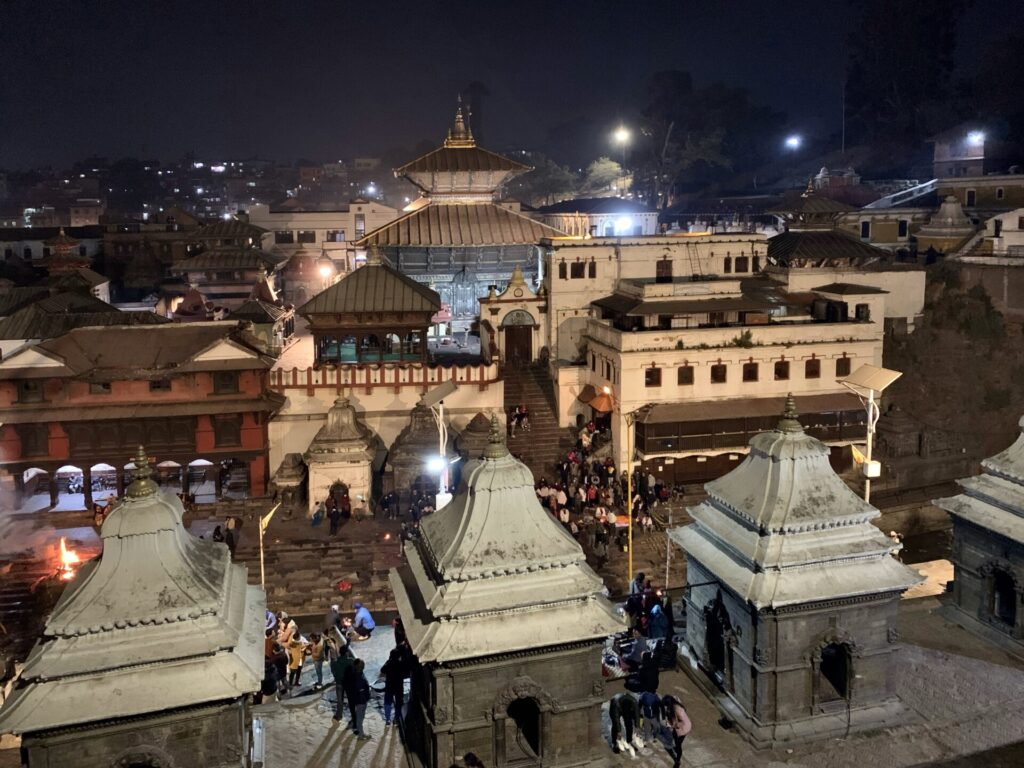
The Religious Significance of Pashupatinath Temple
The Pashupatinath Temple holds immense religious significance for Hindus around the world. Situated on the banks of the holy river Bagmati in Kathmandu, Nepal, this temple is dedicated to Lord Shiva, one of the supreme gods in Hindu mythology.
For Hindu pilgrims, Pashupatinath is a sacred destination and one of the most important places of worship. It is believed that visiting this temple and offering prayers to Lord Shiva can bring blessings, forgiveness, and fulfillment of desires. Many devotees embark on a pilgrimage to Pashupatinath to seek spiritual enlightenment and to gain merit for their souls.
The temple complex itself is a sprawling area that consists of various temples, ashrams, idols, and inscriptions. The main feature of Pashupatinath is the sacred Linga of Lord Shiva, which is placed inside a pagoda structure. The Linga represents the cosmic energy and power of Lord Shiva and is revered by devotees who offer flowers, milk, and other sacred offerings.
Throughout the year, Pashupatinath Temple is a center of religious festivals and ceremonies. One of the most significant occasions celebrated here is Maha Shivaratri, also known as the Great Night of Lord Shiva. On this auspicious day, devotees from all over Nepal and beyond gather at the temple to offer prayers, perform rituals, and seek blessings from Lord Shiva.
Importance of the Bagmati River
The Bagmati River holds immense significance in the cultural and religious traditions of Nepal, especially in the Kathmandu Valley. Considered a sacred river by both Hindus and Buddhists, it plays a crucial role in their rituals, beliefs, and daily lives.
- Spiritual Significance:
The Bagmati River is closely associated with Hinduism and is considered a holy river by Hindus. It is believed to be a manifestation of the goddess Bagmati, who is revered as the divine consort of Lord Shiva. The river holds great spiritual importance as it is believed to cleanse sins and purify the soul. Devotees often visit the river to offer prayers, perform rituals, and take holy dips, believing that it will bring them spiritual liberation and blessings.
- Rituals and Ceremonies:
The banks of the Bagmati River are home to several important religious sites, including the Pashupatinath Temple, one of the holiest Hindu temples in the world. The river plays a significant role in the temple’s rituals and ceremonies. The cremation ghats along the riverbanks are where Hindus carry out their last rites, believing that the deceased will attain moksha (liberation from the cycle of birth and death) by being cremated on its sacred shores.
- Cultural Practices:
Apart from its religious significance, the Bagmati River also holds cultural importance in the Kathmandu Valley. The river has served as a lifeline for the people, providing water for irrigation, agriculture, and other daily needs. The river’s banks are often bustling with various cultural activities, including festivals, fairs, and processions. It is a place where people come together to celebrate their traditions, share their customs, and strengthen their cultural identity.
- Ecological Importance:
The Bagmati River is not only a cultural and religious symbol but also an essential ecosystem that supports diverse flora and fauna. It is home to numerous species of aquatic life, including fish, turtles, and birds. However, over the years, the river has faced significant environmental challenges, such as pollution and encroachment. Efforts are being made to restore the river’s ecological balance and preserve its biodiversity.
Events and Festivals at Pashupatinath Temple
Pashupatinath Temple, located in Kathmandu, Nepal, is not only a significant Hindu pilgrimage site but also a hub of various cultural and religious events and festivals. Throughout the year, thousands of devotees and visitors gather at the temple complex to participate in these vibrant and fervent celebrations. Here are some of the major events and festivals that take place at Pashupatinath Temple:
- Maha Shivaratri: Maha Shivaratri is one of the most important festivals celebrated at Pashupatinath Temple. It is dedicated to Lord Shiva and attracts millions of devotees from all over Nepal and India. During this festival, the temple complex comes alive with colorful decorations and devotional activities. Devotees observe fasts, chant prayers, and offer flowers, fruits, and sweets to Lord Shiva. The highlight of the celebration is the procession of sadhus (holy men) who gather at the temple, adorned in vibrant saffron robes and ash-covered bodies.
- Teej: Teej is a traditional Hindu festival celebrated by women to honor Lord Shiva and Goddess Parvati. Women dress in red attire and fast for the well-being of their husbands and families. At Pashupatinath Temple, women gather in large numbers to participate in special prayers and rituals. The temple premises buzz with the sounds of devotional songs and dances, creating a joyful and festive atmosphere.
- Nag Panchami: Nag Panchami is a festival dedicated to the worship of Nagas, or serpents. It is celebrated on the fifth day of the bright half of the lunar month of Shrawan. Devotees visit Pashupatinath Temple to offer prayers and seek blessings from the snake god. People bring live snakes made of clay or metal to the temple and worship them with milk, flowers, and vermilion.
- Bala Chaturdashi: Bala Chaturdashi is a festival observed to honor the departed souls of loved ones. Devotees visit Pashupatinath Temple to light oil lamps and offer prayers for the salvation of their ancestors. The temple complex is adorned with numerous oil lamps, creating a serene and mystical ambiance.
Boudhanath Stupa: A Symbol of Spiritual Significance and Cultural Richness
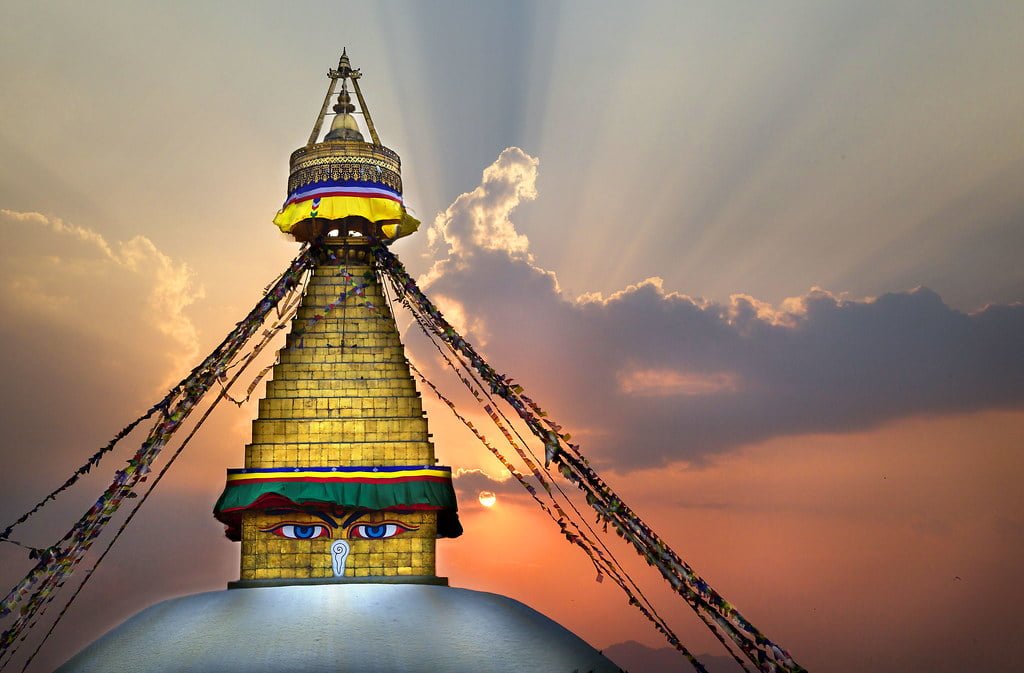
Boudhanath Stupa, the largest stupa in the Kathmandu Valley, stands as a majestic symbol of spiritual significance and cultural richness. Located on the outskirts of Kathmandu, this iconic structure is a testament to Nepal’s deep-rooted Tibetan Buddhist heritage. With its whitewashed dome, gilded tower adorned with the Buddha’s all-seeing eyes, and intricate architectural details, the stupa exudes a sense of tranquility and reverence.
Believed to have been founded by the Nepalese Lichhavi king on the ancient trade route from Tibet, Boudhanath Stupa holds immense historical and religious significance. The stupa was built as a holy place for the followers of Buddhism, and it continues to be the center of Tibetan culture and way of life in Kathmandu. It serves as a spiritual hub where devotees and visitors alike come to seek blessings, engage in prayer and meditation, and immerse themselves in the sacred atmosphere.
As you approach the stupa through a seemingly simple alleyway off the main road, you are greeted by a sight that commands reverence. The stupa towers above you, radiating its pure white glory against the sky, with a golden spire that adds a touch of brilliance. The eyes of the Buddha, painted on all sides of the stupa, serve as a constant reminder of the enlightened wisdom that resides within.
Surrounding the stupa, an array of beautifully decorated monasteries and over 50 Tibetan convents create a harmonious and vibrant ambiance. Exploring the rim of the stupa, you will find an eclectic mix of souvenir shops, where you can find unique mementos to commemorate your visit.
If you are fortunate enough to arrive during prayer time, you will be treated to a mesmerizing experience. The air is filled with the sound of chants and prayers, creating a spiritual aura that envelops all those present. The gentle sound of a brass band may also grace your ears, adding to the enchantment of the moment.
Beyond the spiritual significance, Boudhanath Stupa offers breathtaking panoramic views of the Kathmandu Valley. As you ascend the flight of stairs that leads to the top of the hill, you are rewarded with a sight that will leave you in awe. From this vantage point, the entire city of Kathmandu lays before you, resembling a vibrant and colorful sari. At sunrise and sunset, the views become even more extraordinary, casting a magical spell on all who witness it.
Swayambhunath Stupa (Monkey Temple): A Spiritual and Iconic Landmark in Kathmandu
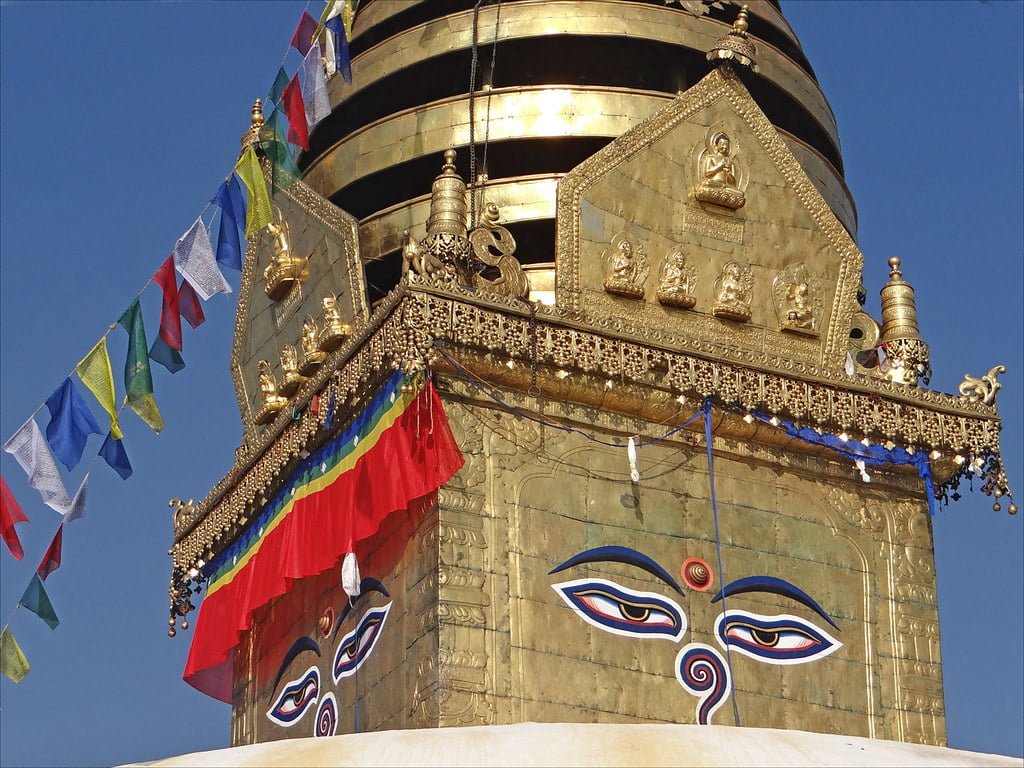
Perched atop a hill in the northwest portion of the Kathmandu Valley, the Swayambhunath Stupa, also known as the Monkey Temple, stands as one of the most ancient and revered holy sites in Kathmandu, Nepal. This iconic landmark is not only a significant religious destination for Buddhists but also a captivating cultural site that attracts visitors from all around the world.
Dating back over 1500 years, the Swayambhunath Stupa has undergone several renovations, with the latest one taking place in 2010. Its historical significance and architectural beauty make it a must-visit destination for those exploring the wonders of the Kathmandu Valley.
The highlight of Swayambhunath Stupa is, without a doubt, the stupa itself. Adorned with Lord Buddha’s eyes painted on all four sides, it stands tall and majestic, topped by a pinnacle of copper gilt. This sacred structure is a symbol of enlightenment and spiritual awakening, drawing pilgrims and devotees to complete their religious deeds.
As you ascend the flight of stairs leading to the stupa, you’ll be greeted by the playful presence of monkeys, earning the temple its popular nickname, the Monkey Temple. These mischievous creatures add a unique charm to the atmosphere, creating a lively and enchanting experience for visitors.
Once you reach the top, a mesmerizing sight awaits you. The panoramic view of the Kathmandu Valley from the Swayambhunath Stupa is simply breathtaking. The sprawling cityscape, surrounded by lush hills and picturesque landscapes, unfolds before your eyes, offering a moment of tranquility and awe-inspiring beauty.
Surrounding the stupa, you’ll also find a collection of temples dedicated to various gods and several monasteries. Each temple is a testament to the rich cultural heritage of Nepal, with intricate designs and vibrant colors that captivate the senses. Exploring these temples and monasteries allows visitors to immerse themselves in the spiritual and artistic traditions of the region.
Changu Narayan Temple: A Gem of Nepal’s Ancient Heritage
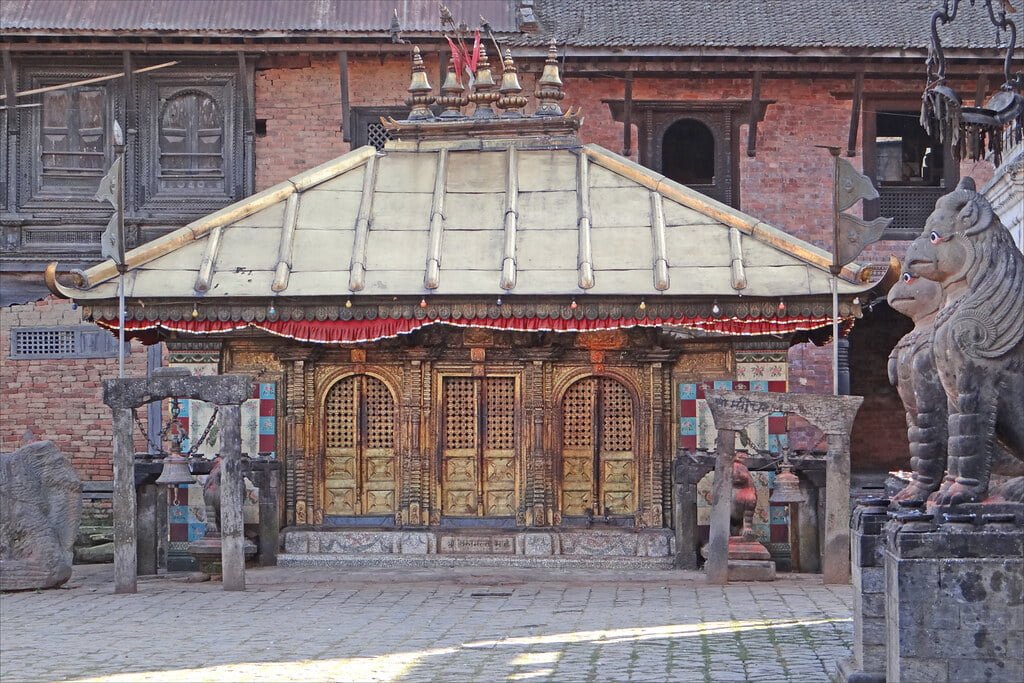
Nestled on a hilltop in Bhaktapur, Changu Narayan Temple stands as a testament to Nepal’s rich cultural and religious heritage. Known as one of the oldest temples in the country, this architectural marvel is dedicated to Lord Vishnu, one of the most revered deities in Hinduism. With its intricate stone carvings, historical significance, and breathtaking views, Changu Narayan Temple is a must-visit destination for both locals and tourists alike.
As you approach the temple, you’ll be greeted by a two-storey brick-red edifice that exudes an aura of grandeur and authenticity. Its Newari style architecture, renowned for its intricacy and attention to detail, showcases the true craftsmanship of the ancient artisans. The temple’s construction dates back to the 4th century, and although it suffered a major fire in 1702, it was painstakingly restored to its former glory.
Step inside, and you’ll be transported to a world of divine beauty. The courtyard is adorned with several statues, some of which date back an astonishing 1500 years. These intricately carved stone sculptures not only showcase the artistic prowess of the ancient craftsmen but also offer a glimpse into the rich cultural and religious traditions that have been passed down through generations.
One of the highlights of a visit to Changu Narayan Temple is the opportunity to witness the religious rituals and practices that take place here. The temple attracts devout worshippers who come to offer their prayers and seek blessings from Lord Vishnu. As you observe the rituals, you’ll witness the deep reverence and devotion that permeates the atmosphere, creating a truly spiritual experience.
Beyond its religious significance, Changu Narayan Temple offers a captivating glimpse into Nepal’s history. Surrounding the temple, you’ll find a quaint village that shares the same name. This village, with its traditional homes and narrow streets, gives visitors a chance to immerse themselves in the local culture and witness the simple yet meaningful way of life of the villagers.
While the temple itself is a sight to behold, the hilltop location of Changu Narayan Temple offers panoramic views of the surrounding landscape. As you gaze out from the temple’s vantage point, you’ll be treated to sweeping vistas of the lush green valleys, majestic mountains, and the bustling city of Kathmandu in the distance. It’s a truly awe-inspiring sight that will leave you with a sense of tranquility and awe.
Bhaktapur Durbar Square: A Journey through the Timeless Splendor of Nepal’s Historic City
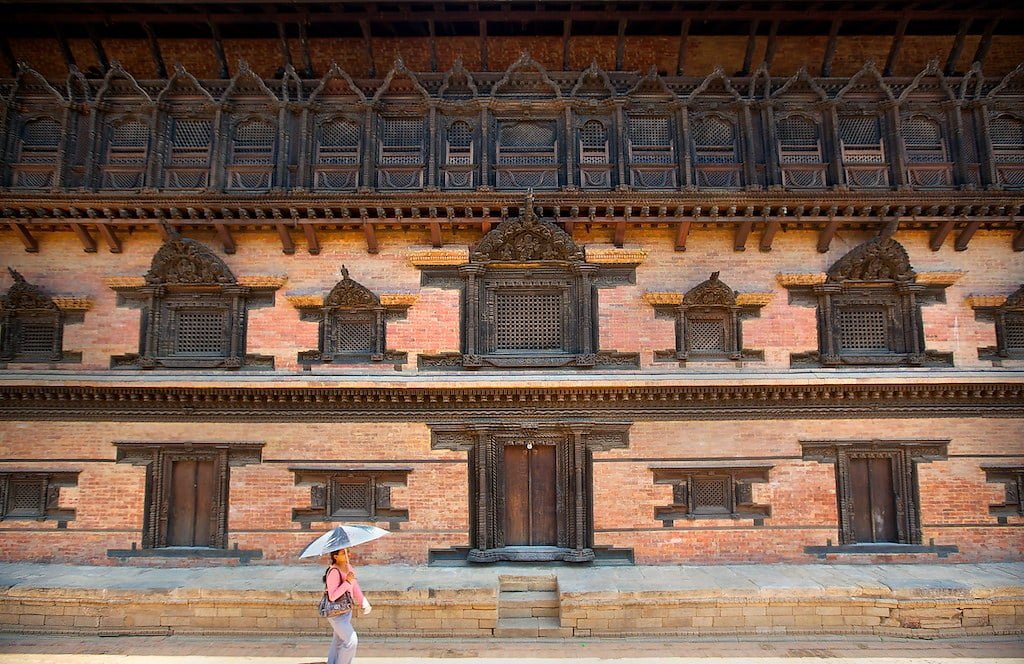
Bhaktapur Durbar Square is a captivating UNESCO World Heritage Site located in the ancient city of Bhaktapur. This historic square is steeped in rich history and is a testament to the architectural brilliance of the Bhaktapur kingdom.
As you enter Bhaktapur Durbar Square, you will be transported back in time to the era of the Bhaktapur kingdom. The square is home to several magnificent temples, palaces, and courtyards that date back to the 12th century. The intricate Newari architecture of these structures is truly awe-inspiring and reflects the cultural and artistic prowess of the local people.
One of the highlights of Bhaktapur Durbar Square is the Palace of Fifty-five Windows. This enchanting palace was the royal residence of the Bhaktapur kings and is adorned with exquisite woodcarvings and windows. The intricate detailing on the palace showcases the craftsmanship of the artisans of that time.
The square is also home to numerous temples that are dedicated to various Hindu deities. The Vatsala Temple, with its ornate carvings and stone sculptures, is a sight to behold. The Naytapola Temple, dedicated to the goddess Siddhi Lakshmi, stands tall with its five-tiered roof and intricate wooden carvings. The Bhairab Nath Temple, dedicated to the fierce deity Bhairab, is another must-visit attraction in the square.
Exploring Bhaktapur Durbar Square is like walking through a living museum. Every corner of the square is adorned with historical artifacts, statues, and stone carvings. The square also hosts a great variety of attractions with unique handmade designs, offering visitors a glimpse into the skilled craftsmanship of the local artisans.
Not only does Bhaktapur Durbar Square showcase the architectural wonders of the past, but it also provides a unique cultural experience. The square is surrounded by the charming city of Bhaktapur, known for its traditional way of life and vibrant festivals. The city’s narrow streets and ancient buildings create an enchanting atmosphere that is perfect for a leisurely stroll.
To reach Bhaktapur Durbar Square from the bustling district of Thamel, it takes approximately 40 minutes by taxi. The journey itself is a scenic one, as you pass through picturesque landscapes and get a glimpse of the rural life of Nepal.

